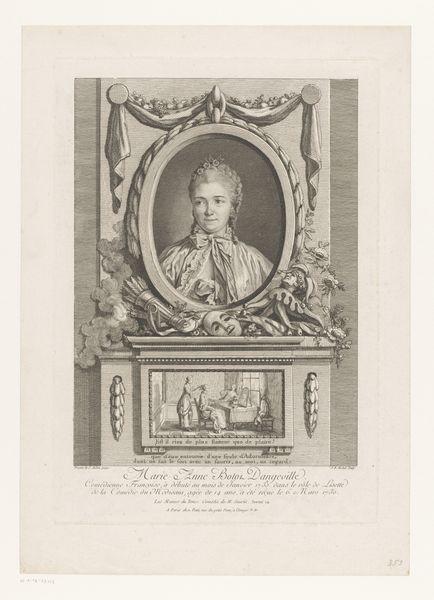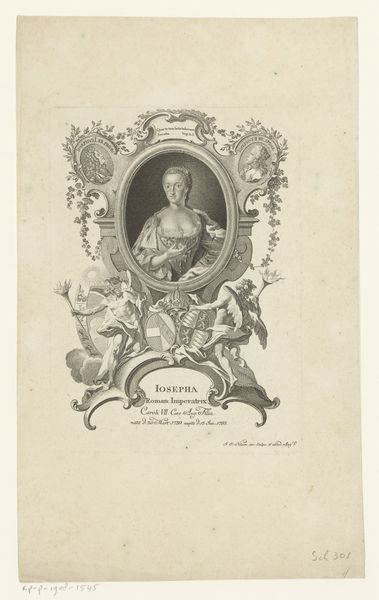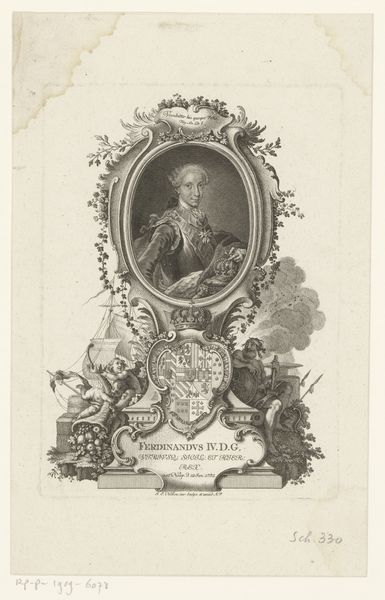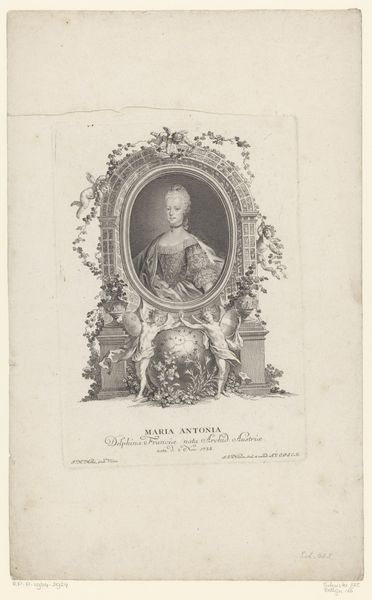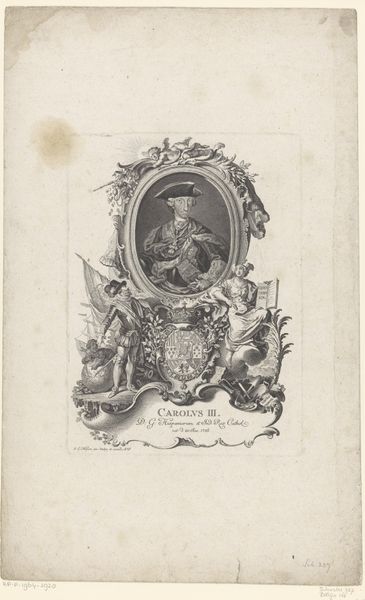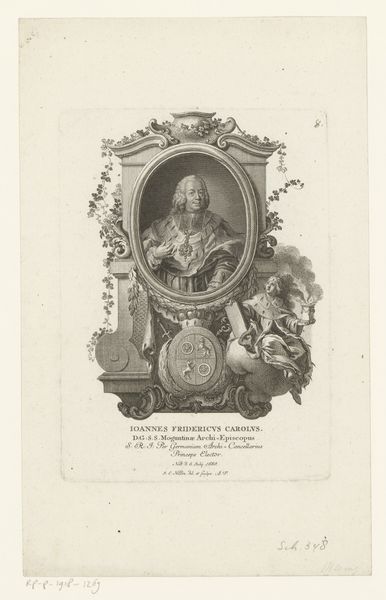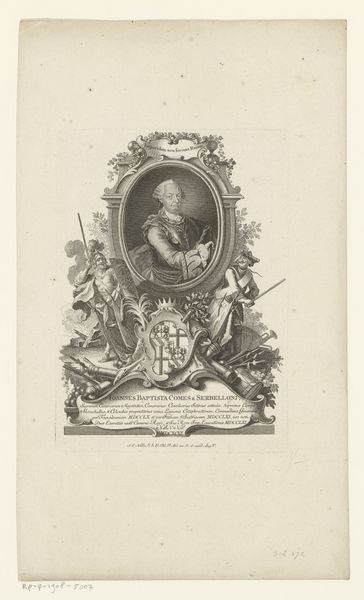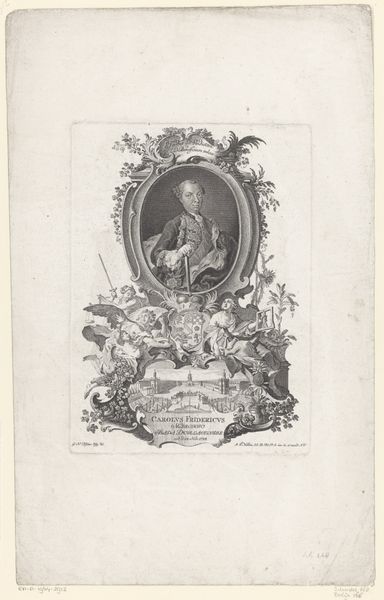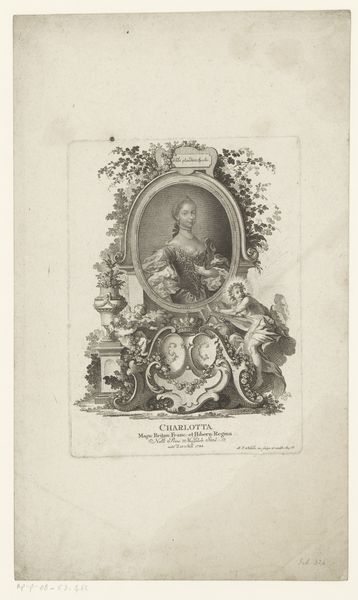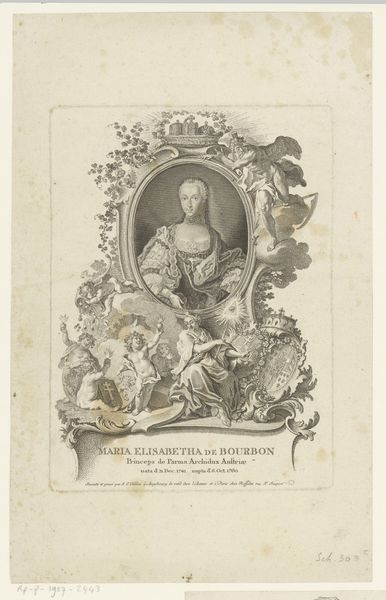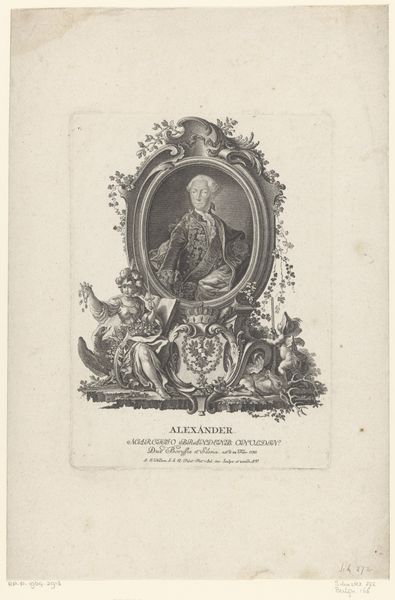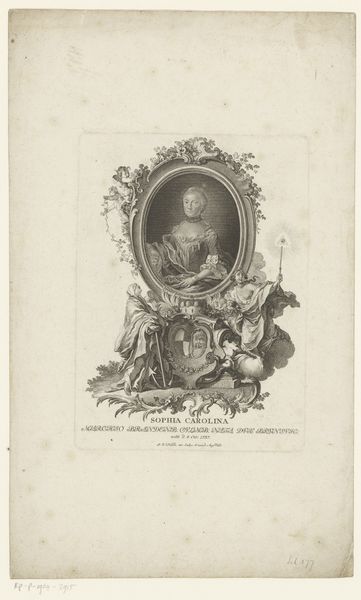
print, etching, engraving
#
portrait
#
baroque
# print
#
etching
#
history-painting
#
engraving
Dimensions: height 224 mm, width 162 mm
Copyright: Rijks Museum: Open Domain
Curator: So, what strikes you first about this portrait of Catherine the Great, created by Johann Esaias Nilson between 1731 and 1788? It's an etching and engraving, so a print, which speaks volumes about accessibility... Editor: Honestly? She looks... unamused. Like she's tolerating the artist rather than enjoying the process. The Baroque frame is wild, though, teeming with figures. Are those cherubs flirting with classical gods? Curator: It's typical of Baroque portraiture to elevate the subject, to tie them into classical themes, almost to deify them within their own lifetime. Prints like these circulated widely, establishing and reinforcing the power and image of Catherine. This piece even attempts to legitimize her reign, associating her with "sacrament". Editor: So it's less about capturing Catherine the person and more about cementing Catherine the persona, the ruler. Still, there's a stillness about her. Maybe it’s just how portraiture was back then. I can't imagine sitting still for hours and not making silly faces. The details in her gown are so meticulous, though. And the use of light... quite remarkable for a print. Curator: The artistry is definitely present, a necessity when crafting an image meant to last and persuade. These details you notice – the gown, the light, even Catherine's expression – become part of the larger narrative of her reign that was carefully cultivated and widely disseminated across Europe. Editor: Makes you wonder what Catherine herself thought of it. Did she feel like it captured her essence or was it just another piece of propaganda? Still, whether she approved or not, it's a snapshot, or a carefully posed tableau, of a powerful figure frozen in a particular moment. I feel like I just eavesdropped on an 18th-century Instagram post, but without the flattering filters. Curator: An interesting comparison, the filter observation. We look for the realness beyond presentation. Which, as a historian, is part of the great task in accessing any historical figure through representation. Editor: Right! The way people see you is how history sees you, more or less. Thank you for taking the time to provide valuable and informative context, though. Curator: And thank you for lending your intuitive gaze. History really lives in those personal insights.
Comments
No comments
Be the first to comment and join the conversation on the ultimate creative platform.
